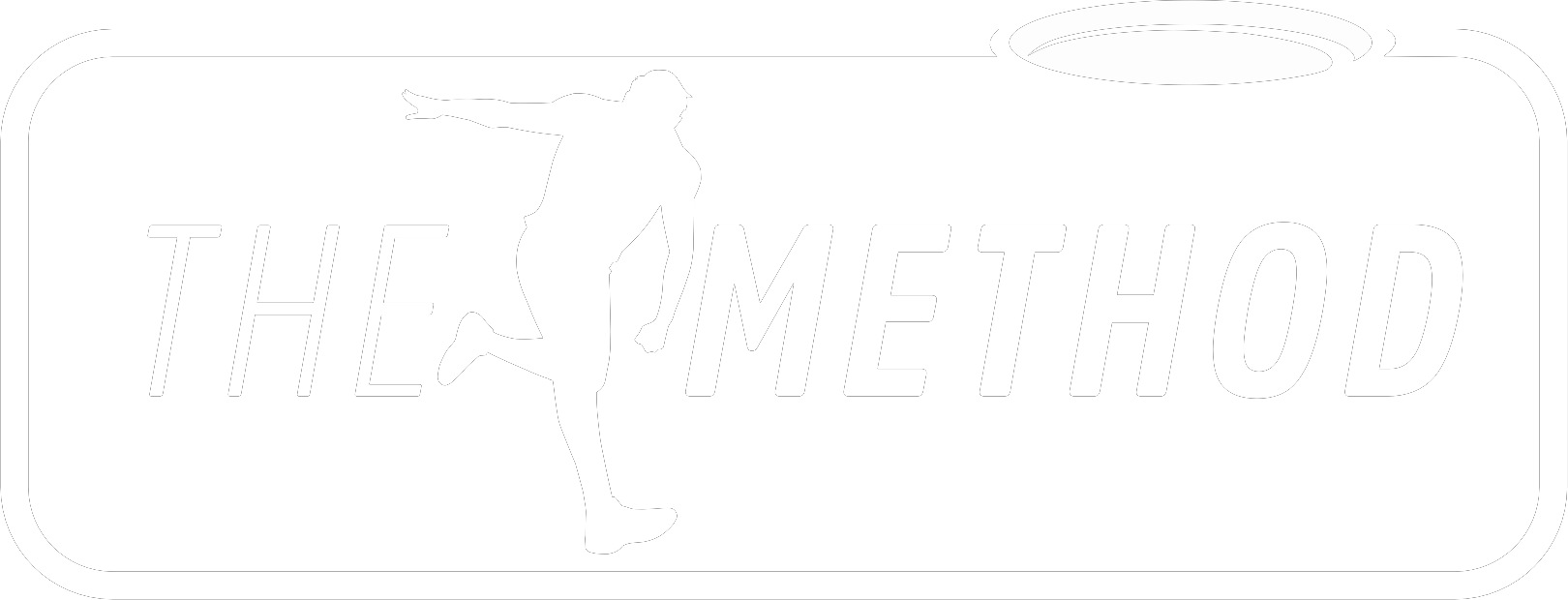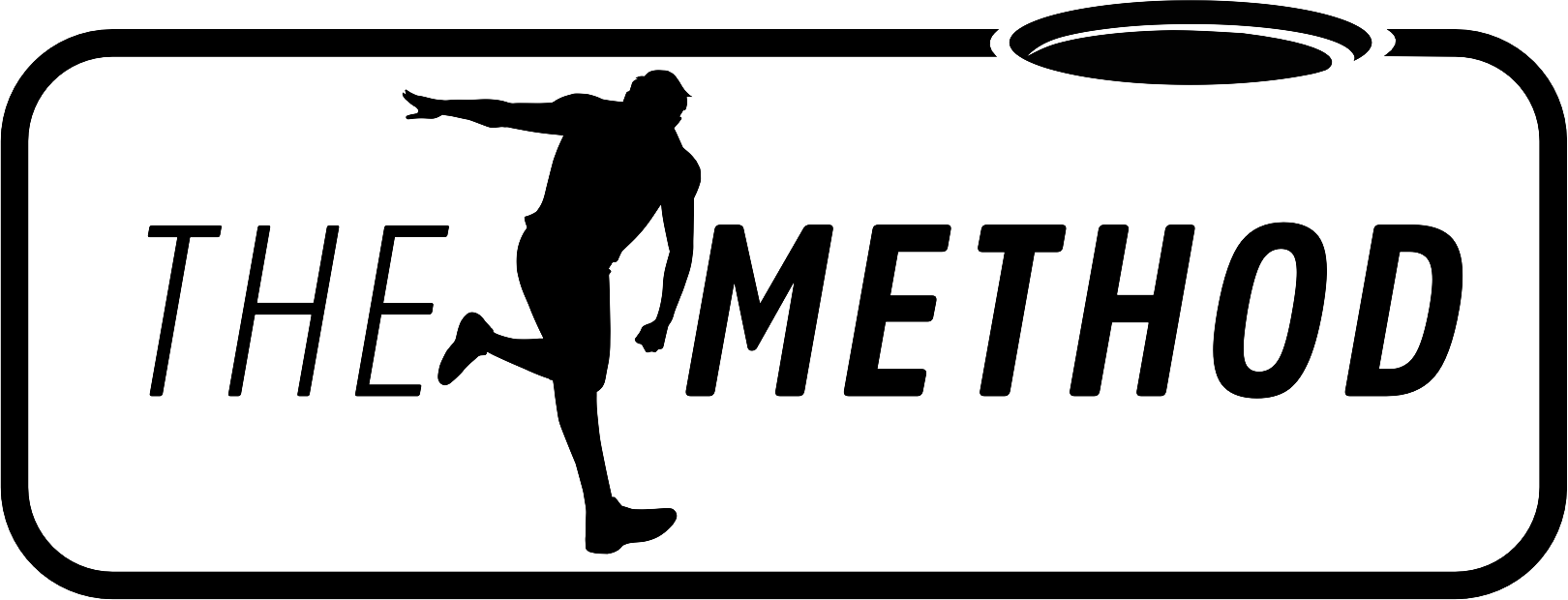A Montage That Tells a Perfect Story of “Timing” in Disc Golf
By: Brian Weissman
In the world of disc golf, few ideas are as frequently discussed—and yet so commonly misunderstood—as “timing.” It’s referenced by instructors, pros, and commentators alike, yet many players struggle to implement it in their own throw. One powerful visual aid emerged from the U.S. Disc Golf Championship event a few years ago, where Coach Chris Taylor—who has spent years studying professional form using motion capture and slow-motion video—organized a distance competition and then published a fascinating photo montage. This collage shows four of the sport’s hardest throwers at the exact moment their brace leg is planted, fully de-weighted off their trailing side. At first glance, they appear identical below the waist, but on closer inspection, each player’s approach to timing is subtly different.
The montage highlights the concept of “dynamic balance,” where the player’s weight is driven into the planted (brace) leg, and the rest of the body lines up for a surge of power from the ground upward. The magic word—“timing”—refers to how well each athlete waits for that energy to accumulate before engaging the upper body. Perfect timing not only prevents injuries but also maximizes distance by allowing a clean energy transfer into the disc at release. Let’s step through these four players, moving from right to left in the photo, to see how each embodies a slightly different level of timing and efficiency.
Ezra Aderhold – The Upper-Body Powerhouse
On the far right is Ezra Aderhold, a force of nature on the Disc Golf Pro Tour for the last several years. Known for his formidable upper-body strength, Ezra can throw a full-weight disc around 79 miles per hour—enough for drives well beyond 600 feet. If you look closely at the collage, you’ll see his legs are in the same basic position as the other three throwers, but his head and right shoulder are already driving forward. His face is a rictus of strain and exertion, his head has come forward, buried into his right shoulder. His muscles from his neck and shoulders down through his forearm look locked and tense, as though he’s pulling with all his might just a fraction of a second before the disc truly launches. While this approach still generates colossal power, it relies heavily on muscular torque from the upper body, rather than allowing a more gradual build of kinetic energy from the ground. As a result, Ezra’s timing skews slightly earlier in the arm pull than what many coaches consider “optimal.”
Kristian Kuoksa – Balancing Upper and Lower Body Mechanics
Directly to the left of Aderhold is Kristian Kuoksa, a Finnish thrower who burst onto the scene while demonstrating how he launches discs over 700 feet. Compared to Ezra, Kristian’s head isn’t as far forward at the moment of the photo, and his arm—though still engaged—doesn’t look as rigid. You can see a bit more strength in his legs and a slightly more patient transfer of energy up through his body. It’s still a powerful action involving the arms and torso, but much of the force appears to stem from his planted leg and core. Kuoksa is capable of exceeding 80 miles per hour with a full-weight disc, and his technique underscores how waiting just a bit longer before “pulling” can grant you access to more of the stored power in your lower body.
Albert Tamm – The Estonian Giant. A Picture of Leveraged Efficiency.
Next in the photo is Estonia’s Albert Tamm. Towering at around 6’4”, Tamm showcases the growing reputation of Northern Europe as a hotbed for elite-level disc golf. In the still frame, Tamm’s brace leg is planted firmly, and his weight is pushed fully into his front side. While he doesn’t appear to be exerting his upper body in the same way as Aderhold, he still harnesses a formidable amount of torque. Tamm’s long arms give him an extreme leverage advantage, which helps transfer all his momentum up through his torso and into his throwing arm. If you look at his posture, there is an evident unity between his legs, hips, and shoulders—each segment working in sequence rather than relying solely on one major muscle group. Pay close attention to where Albert is looking as well. You can see his head hasn’t come forward at all, indicating he is waiting to exert his upper body until the very last second. This is “timing”, personified.
David Wiggins Jr. – The Paragon of Timing
On the far left, and widely recognized as the hardest thrower in disc golf history, stands David Wiggins Jr. He has held the world distance record almost constantly since he was 16 years old, and his current mark over 1100 feet is impossible to even comprehend. In the photo, Wiggins’s lower body looks like a statue, his quad flexing hard like he’s doing a max weight squat. David is clearly exerting a ton of energy. Yet as you travel up his torso, he seems almost comically casual. If you removed the image of his lower body and replaced it with a countertop, he looks like he’s just resting his elbow after a long day of work. His head and shoulder and neck are completely relaxed. This effortless poise is the hallmark of perfect timing—holding off on the final burst of force until all that ground energy has traveled up through the body. When he does finally unleash the disc, it’s ripping out at an absurd 85 miles per hour. That stark contrast—tense lower body, calm upper body—makes Wiggins’s timing the gold standard.
So what does this mean for the average disc golfer? By contrasting these four athletes, you can see timing progress from heavily upper-body driven (Ezra) to peak synchronization (Wiggins). All of them have a solid brace leg and dynamic balance, but their subtle variations in when and how they engage the arm make a major difference. In particular, the “wait” time—pausing until the momentum is ready to flow upward—is a skill that allows for efficient power transfer without muscling the disc.
If you want to improve timing, start by refining your lower-body mechanics. Ensure your plant foot is stable with your heel completely down, and practice driving your body weight into the brace leg. The Method will help you find that initial brace position. From there, focus on delaying your upper-body pull until you sense that energy coursing up through your legs and core. Observe how these four pros differ. That visual contrast can inspire you to experiment and find your own sweet spot—where you’ve built maximum ground power before involving the arms. Remember, in disc golf, a single snapshot can reveal countless lessons about balance and timing, so study those stills, emulate the principles, and watch your drives disappear into the distance.

